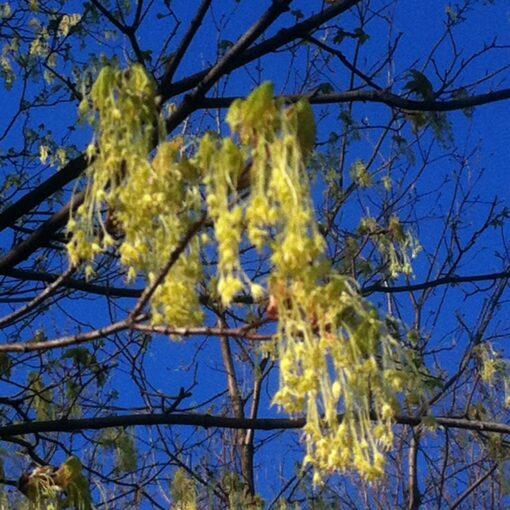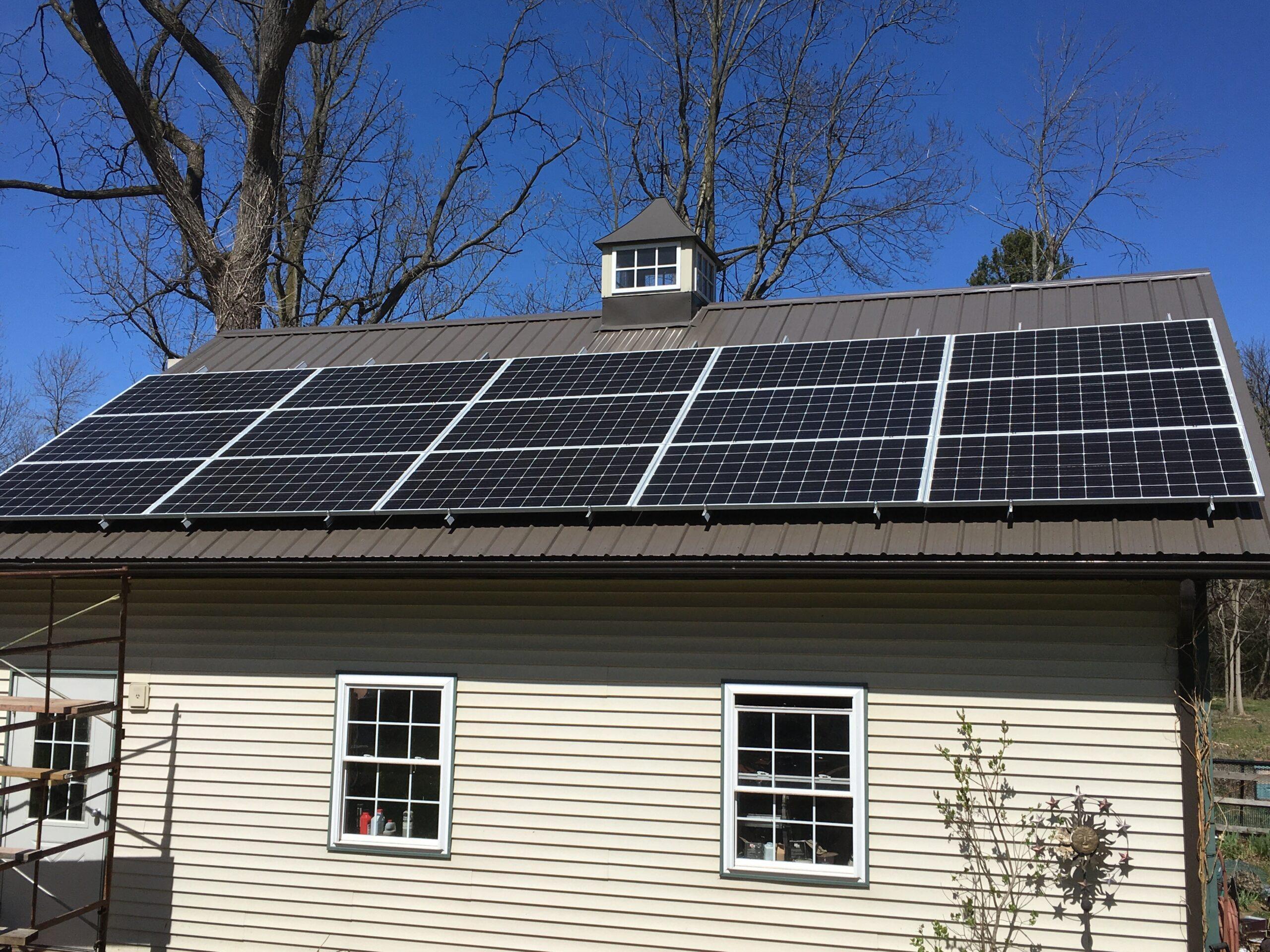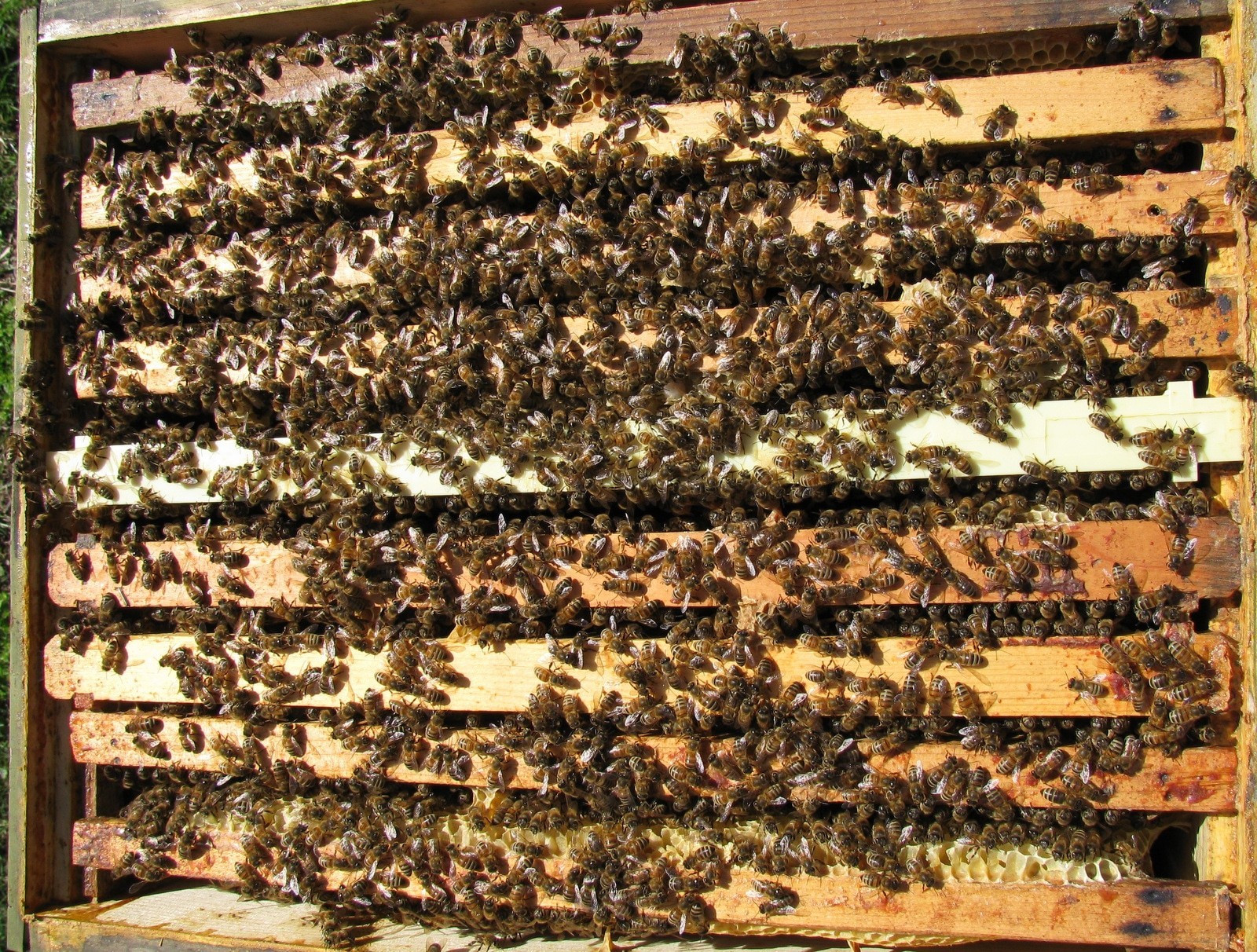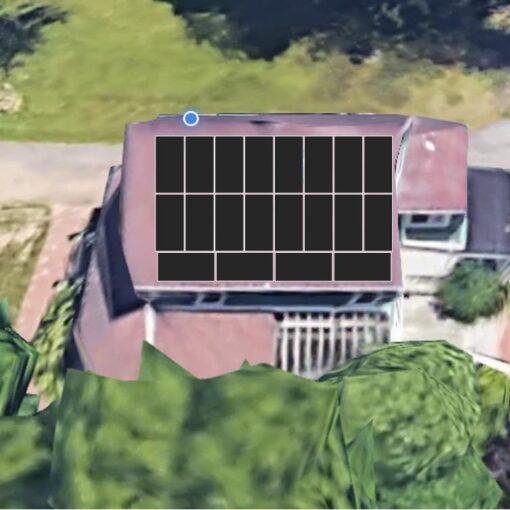This is a hard working hive. Very hot and damp, the bees were out working hard today and decided to take a break out on the porch. This is my power hive. This hive swarmed out last year and was queenless so I re-queened it with a Carniolan from a guy in Ohio. You can see the results. I am going to attempt raising queens this year and this will be my breeder queen. Good chance the locusts will be blooming this year and I need to get more supers on the hives.
AUTHOR
Ward
You may also like
The maples are in bloom and have opened up yesterday and I am congestion and sneezing. No sign of the basswoods blooming but still a bit early for them. The wild bees are very aggressive and Amy got stung Sunday.
It was chilly overcast spring morning when we started. I wanted to get them installed as early in spring as possible to get a full season of sunlight. The next day the sky had cleared and the sun was shining bright on a crisp blue background. I threw the switch on the inverter and powered up the system and the capacitors started to hum.
The Forsythia blossomed here Wednesday. The shad should be running in the Hudson now. Wonder if any of the Gabrielson boys are […]
Solar Roof Install: A Personal Goal This year I fulfilled a personal project of installing solar on my house. A few years […]



